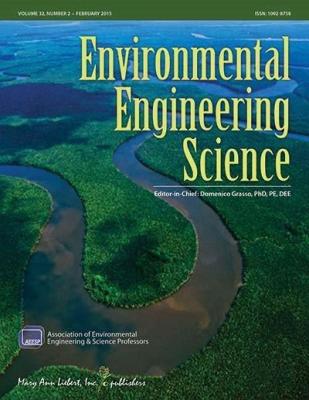Mar 11 2015
The increased use of engineered nanoparticles (ENMs) in commercial and industrial applications is raising concern over the environmental and health effects of nanoparticles released into the water supply. A timely study that analyzes the ability of typical water pretreatment methods to remove titanium dioxide, the most commonly used ENM, is published in Environmental Engineering Science, a peer-reviewed journal from Mary Ann Liebert, Inc., publishers. The article is available free on the Environmental Engineering Science website until April 10, 2015.
 Environmental Engineering Science, the official journal of the Association of Environmental Engineering and Science Professors (AEESP), is an authoritative peer-reviewed journal published monthly online with Open Access options. CREDIT: ©Mary Ann Liebert, Inc., publishers
Environmental Engineering Science, the official journal of the Association of Environmental Engineering and Science Professors (AEESP), is an authoritative peer-reviewed journal published monthly online with Open Access options. CREDIT: ©Mary Ann Liebert, Inc., publishers
Nichola Kinsinger, Ryan Honda, Valerie Keene, and Sharon Walker, University of California, Riverside, suggest that current methods of water prefiltration treatment cannot adequately remove titanium dioxide ENMs. They describe the results of scaled-down tests to evaluate the effectiveness of three traditional methods--coagulation, flocculation, and sedimentation--in the article "Titanium Dioxide Nanoparticle Removal in Primary Prefiltration Stages of Water Treatment: Role of Coating, Natural Organic Matter, Source Water, and Solution Chemistry".
"As nanoscience and engineering allow us to develop new exciting products, we must be ever mindful of associated consequences of these advances," says Domenico Grasso, PhD, PE, DEE, Editor-in-Chief of Environmental Engineering Science and Provost, University of Delaware. "Professor Walker and her team have presented an excellent report raising concerns that some engineered nanomaterials may find their ways into our water supplies."
"While further optimization of such treatment processes may allow for improved removal efficiencies, this study illustrates the challenges that we must be prepared to face with the emergence of new engineered nanomaterials," says Sharon Walker, PhD, Professor of Chemical and Environmental Engineering, University of California, Riverside.